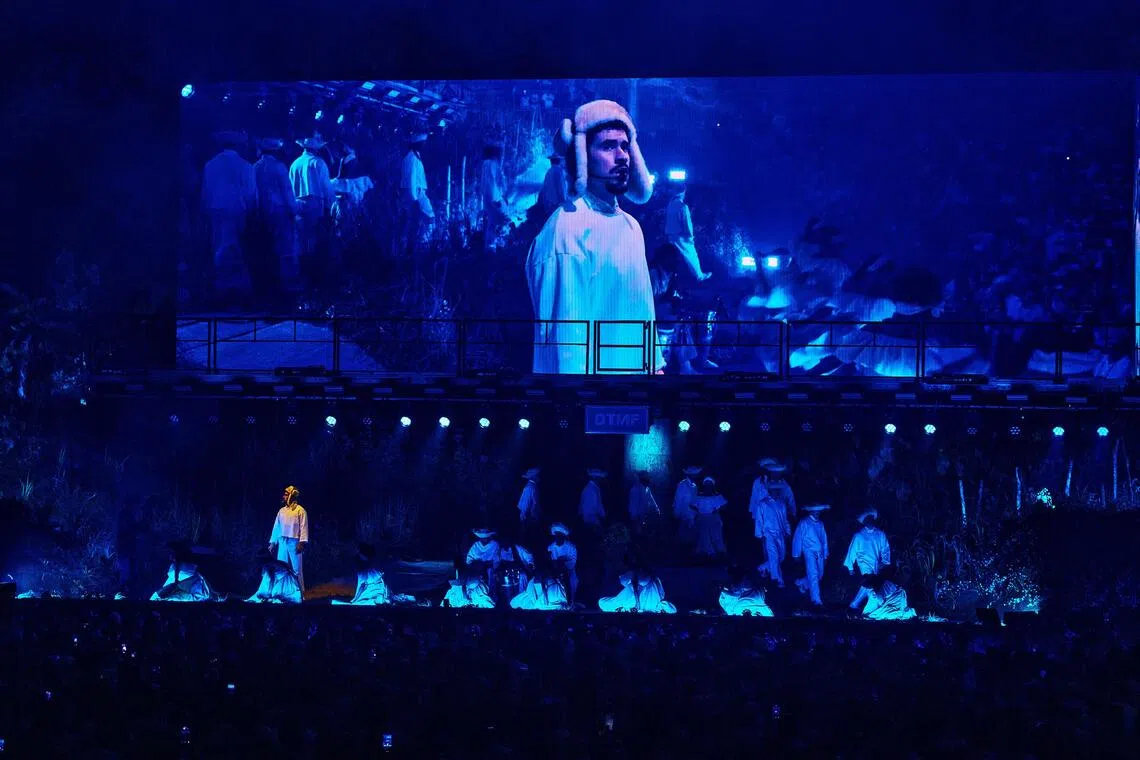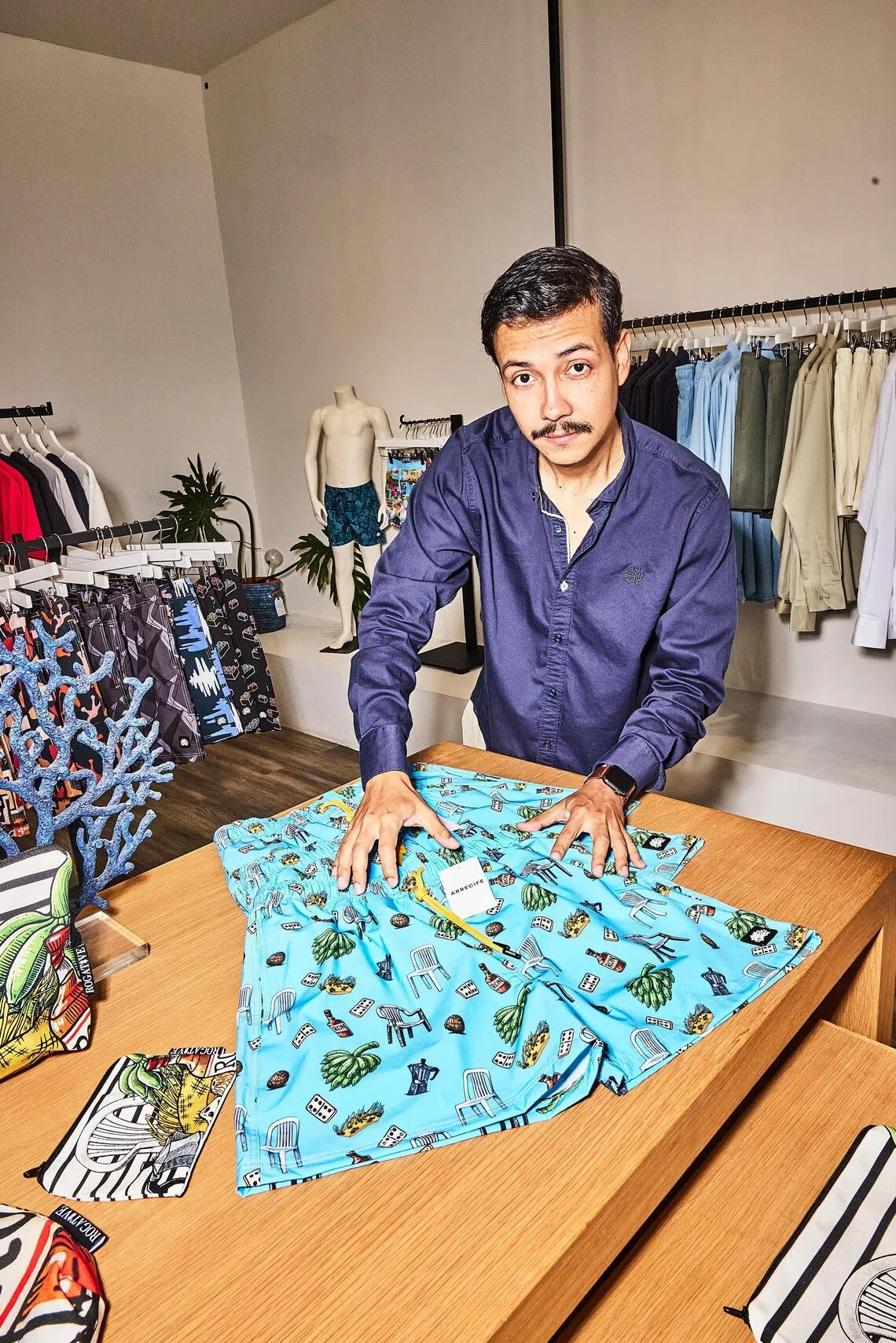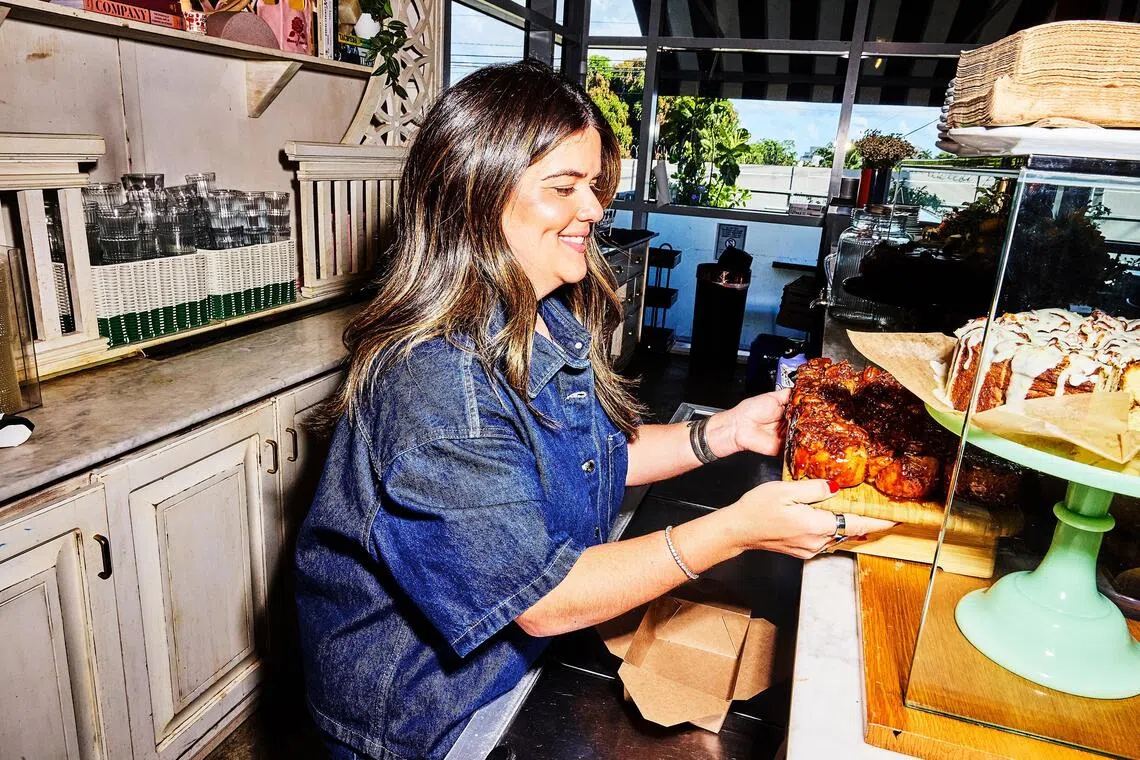How rapper Bad Bunny is boosting Puerto Rico’s economy during slow season
Sign up now: Get ST's newsletters delivered to your inbox

Bad Bunny during his residency at the Coliseo de Puerto Rico Jose Miguel Agrelot in San Juan in August 2025. His three-month concert series is spurring a short-term surge in Puerto Rico's economy.
PHOTO: AMY LOMBARD/THE NEW YORK TIMES
Shefali S. Kulkarni
Follow topic:
PUERTO RICO – Puerto Rico’s economy is getting a bump from Bad Bunny.
The award-winning Puerto Rican rapper’s three-month, 30-show concert series in San Juan is spurring a fan-fuelled surge in the island’s economy at a time of year when tourism is usually slow.
During the Atlantic hurricane season, which runs from June to November, tourism typically drops by 25 to 45 per cent, and lodging prices fall by as much as half, according to the tourism agency Discover Puerto Rico. Tourism accounts for about 7 per cent of Puerto Rico’s US$114 billion (S$146 billion) economy.
Bad Bunny’s residency, which ended on Sept 14, was expected to draw about 600,000 attendees and have a direct economic impact of US$250 million, according to Moody’s Analytics. It estimated that total spending, which includes purchases not directly related to shows, will top out at US$400 million.
Bad Bunny’s stay is ahead of an eight-month world tour beginning in December and comes on the heels of global mega-tours that have become a playbook for chart-topping artistes. Taylor Swift’s The Eras Tour grossed more than US$2 billion in ticket sales, while Beyonce’s Cowboy Carter Tour brought in US$407 million. Bad Bunny’s 2024 world tour took in US$208 million.
Moody’s recently raised its 2025 economic forecast for Puerto Rico to 0.4 per cent, from 0.3 per cent, partly because of the residency. Mr Jesse Rogers, head of Latin America Economics at Moody’s, said if his team members were not Bad Bunny fans, “we would have probably missed this”.
“The bittersweet component is that this stimulus isn’t going to last,” he added. “You get a slightly slower growth in 2026 as that stimulus fades” and the temporary jobs sparked by the residency end.
Still, “there’s a genuine effort here to impact tourism”, said Mr Jorge Perez, who manages San Juan’s Coliseo de Puerto Rico Jose Miguel Agrelot, the 19,500-seat venue hosting the residency.
The series was, for its first nine nights, open to only residents. Some 80,000 tickets, ranging from US$35 to US$250, were sold in eight hours, bringing in nearly US$11 million in revenue. Another 400,000 tickets, available to the public, sold out within four hours in January.
“We knew this would be big,” said Mr Alejandro Pabon, a partner and a promoter of Move Concerts, which produced the residency. “As soon as we got the dates for the venue, our next question was, ‘Will there be enough hotel rooms for something like this?’”
Revenue from short-term rentals in San Juan more than doubled from 2024, according to AirDNA, which tracks short-term and vacation rentals globally.
“You see this kind of bump when it’s the Paris Olympics or the Super Bowl, but those are short stints,” said its chief economist Jamie Lane. “This is the first time we’ve seen it consistently, in one city.”
When Ms Tanya Orbera, who runs Real PR Travel, a vacation planning company, discovered that hotels were booking up fast, “I heard ‘cha-ching’ in my head,” she said. She initially offered party-bus packages, with music and drinks, to shuttle concertgoers to shows.

Camilo Pulido at his store, Arrecife, in San Juan, Puerto Rico.
PHOTO: AMY LOMBARD/THE NEW YORK TIMES
But sales were slow, so she began to offer the rides to anyone who wanted to go to the coliseum, where vendors are hosting booths and activities on show nights. “In this type of situation, you have to get in, get your dollars and be smart about the money you are going to make right now,” she said.
The neighbourhood surrounding the coliseum is a bit of a tourism desert, a stretch of financial institutions and office buildings. When Mr Camilo Pulido opened his men’s beachwear shop, Arrecife, there six years ago, the lack of foot traffic concerned him. But since Bad Bunny’s residency began, he said, he has seen an uptick in the number of American tourists visiting his store. Online sales have also more than quadrupled, largely driven by US orders in advance of shows.
“From January to June 2025, we generated the same revenue as we did in all of last year,” Mr Pulido said. And while sales usually drop during hurricane season, he has hired four part-time workers in 2025. “Before June, there were only two employees.”
Discover Puerto Rico is leveraging the temporary swell of visiting fans and their dollars to highlight local businesses beyond the usual high-traffic areas and culture, including classes in traditional bomba dance and tours of coffee farms. It is also marketing locally made goods, such as residency-inspired swimwear created by Pulido’s company.

Ms Rosa Torres Feliciano, owner of the Tia Cocina cafe in San Juan, Puerto Rico.
PHOTO: AMY LOMBARD/THE NEW YORK TIMES
Ms Rosa Torres Feliciano, owner of Tia Cocina cafe near Guaynabo, just south of San Juan, created Instagram posts highlighting businesses she hopes concertgoers will patronise. “I think it’s a moment when we should all support one another and have more visibility,” she said.
“I don’t pretend that everyone will come to my restaurant. But I also enjoy knowing that you may come to my restaurant, and tomorrow maybe you’ll go to my friend’s restaurant or another small business.” NYTIMES

